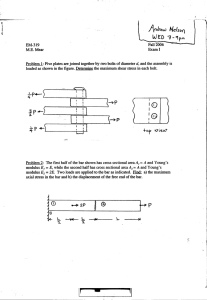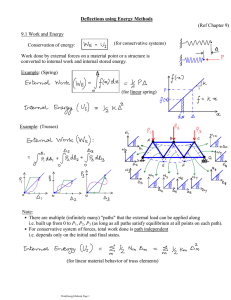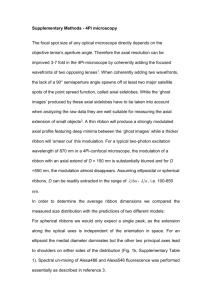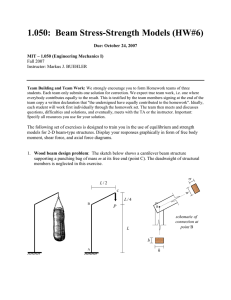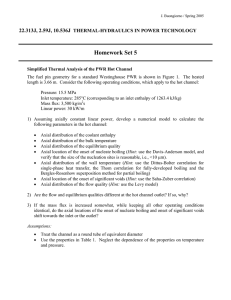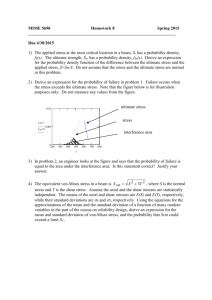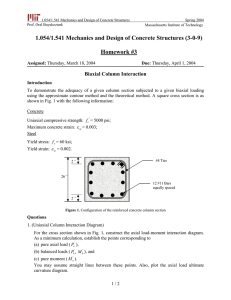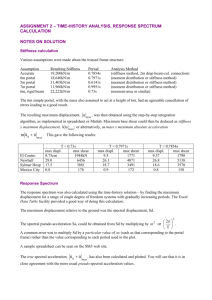CE 595 – Finite Elements in Elasticity
advertisement
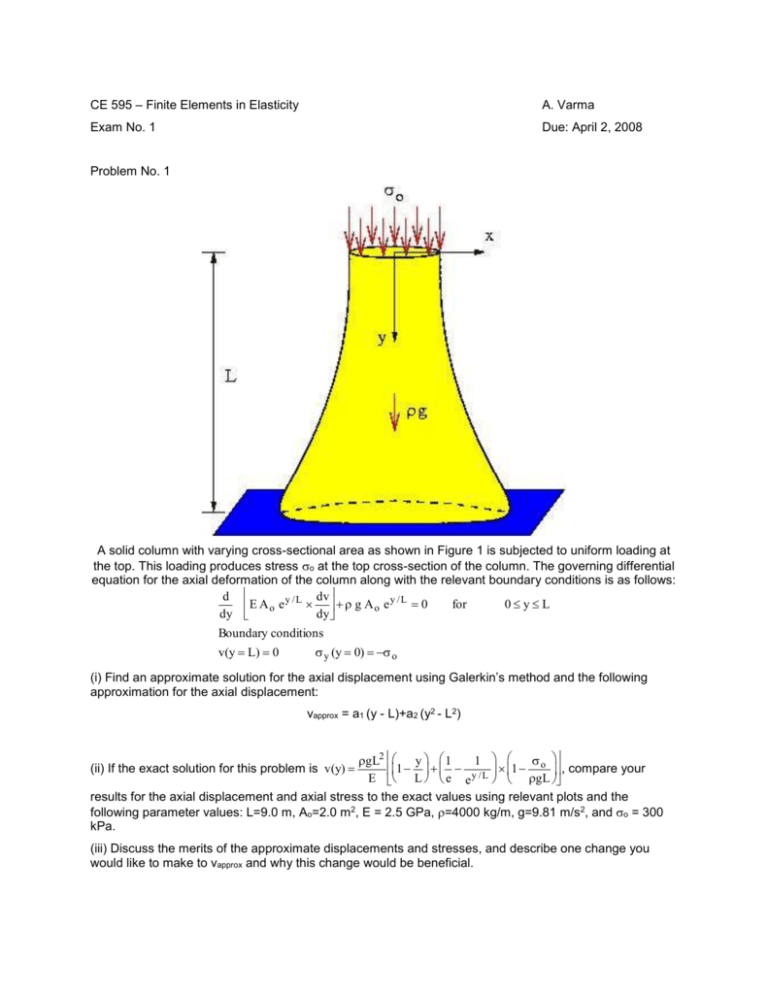
CE 595 – Finite Elements in Elasticity A. Varma Exam No. 1 Due: April 2, 2008 Problem No. 1 A solid column with varying cross-sectional area as shown in Figure 1 is subjected to uniform loading at the top. This loading produces stress o at the top cross-section of the column. The governing differential equation for the axial deformation of the column along with the relevant boundary conditions is as follows: d y /L dv g A o e y /L 0 for 0yL E A o e dy dy Boundary conditions v(y L) 0 y (y 0) o (i) Find an approximate solution for the axial displacement using Galerkin’s method and the following approximation for the axial displacement: vapprox = a1 (y - L)+a2 (y2 - L2) gL2 y 1 1 1 y /L 1 o , compare your E L e e gL results for the axial displacement and axial stress to the exact values using relevant plots and the following parameter values: L=9.0 m, Ao=2.0 m2, E = 2.5 GPa, =4000 kg/m, g=9.81 m/s2, and o = 300 kPa. (iii) Discuss the merits of the approximate displacements and stresses, and describe one change you would like to make to vapprox and why this change would be beneficial. (ii) If the exact solution for this problem is v(y) Problem No. 2 y 4 kips/ft2 (0,4) 4.0 kips 1 2 d8 d7 3 d6 (2,2) 5 4 4 ft. d5 6 7 d3 d1 8 x (0,0) (4,0) d2 4 ft. d4 4 ft. LOCAL ELEMENT GLOBAL PROBLEM Analyze a shear wall problem of dimensions shown in Figure 2. The shear wall is subjected to gravity and lateral loads as shown. It has a thickness of 0.25 ft. Assume that the shear wall is fixed at the base. Assume a state of plane stress with E=4.32 x 106 ksf and =0.30 Assume a mesh of triangular elements as shown in the figure. Assume that there is no body force present. You must use a new triangular element having four nodes and eight degrees of freedom, as shown above in Figure 2(b). Use the following interpolations for the displacements u(x, y) = a1 + a2 x + a3 y + a4 x y v(x, y) = a5 + a6 x + a7 y + a8 x y Showing all of the necessary steps, calculate the horizontal and vertical displacements of the nodes 1, 2, 3, 4, and 5. Report the element stiffness matrix for element 1. Hints: (a) Use a math program (like Mathcad, Matlab, etc.) to perform all the calculations. 4 4x (b) Realize that for element 1 dA dydx and so on for other elements. element#1 0 0 (c) Do not perform the integration for the element stiffness matrix by hand, or using the Gauss quadrature rules. Let the math program perform the direct integration. method of static condensation for applying the boundary conditions. (d) Consider using the


